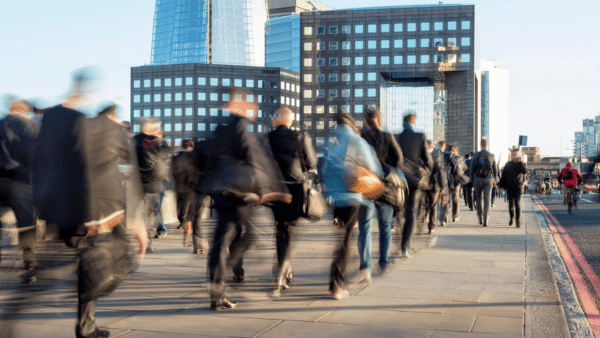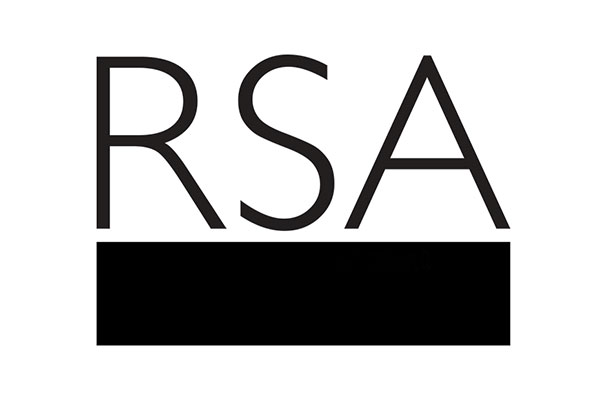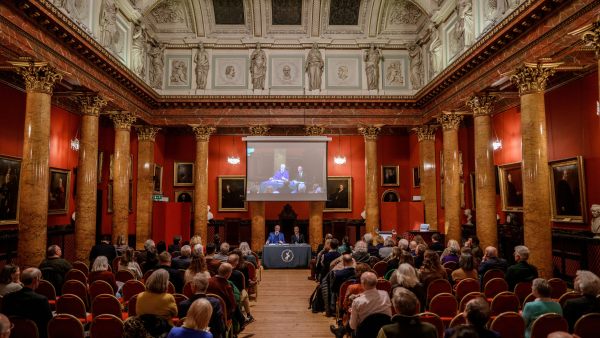The world’s poorest communities create the smallest carbon footprint yet suffer disproportionately from the ravages of ecological disasters
For the past 20 years I have been working on the frontline of the climate crisis. Bangladesh, a 148 sq km delta of silt with 170 million people, 52% of which is under water, is battered by climatic disasters and faced with submersion within decades if the world keeps warming at its current rate, leaving 42 million people at risk by 2050.
Along the coastal areas of the Bay of Bengal, in a remote village near the Sundarbans, lives Mashkura. She had a happy childhood, later a happy marriage. As she passed her youth, a future disaster had already begun unfolding. Sea levels were rising. The cyclones that battered this coast were becoming more frequent and unpredictable. The embankments that protect them from tidal surges began to crumble. No one repaired them. Over the years, salinity from the sea spread inland, impacting lives dramatically.
Over six years, Mashkura had three miscarriages. Abandoned by her shrimp-farmer husband, she was ostracised by her community. All her dreams were shattered. Mashkura was a victim of salinity. There are millions of Mashkuras.
Bonomali Mondol, 65, withered and suffering, looks 100. He silently sits looking at miles and miles of saline water, grey dying trees, and reminisces of his once flourishing green fields and happy life before Cyclone Aila struck in 2009. He passed years in poverty. Nobody cares for his loss either.
Nupur, 14, lives far inland on the banks of the mighty Brahmaputra River in North Bengal. Her home is on a char, or a sandbar island, called Dewalikhola. Nupur is one of five daughters of a day labourer, Kaiyum, who lives hand to mouth. They have had to shift their house several times over the past 10 years. During monsoon, erosion happens. As the islands move, the population is displaced.
In 2020 the floods come again. In an unprecedented twist, they recede and return five times, sweeping away entire islands. Nupur’s home starts to break away once again. Erosion at this scale and frequency was unthinkable 20 years ago. In danger of losing the family’s home again, their food being depleted from the prolonged flooding, Nupur is married off to her father’s friend. At least now there is a chance that Kaiyum can feed his other four daughters and they can live up to the age of 14, perhaps only to be married off again for survival.
Nupur, Bonomali and Mashkura have not contributed to their fate or to the climate crisis in any way.
Understanding climate injustice
To understand climate justice, we need first to understand climate injustice. In Bangladesh, each person emits on average 0.47 tons of carbon, compared with an average of 10.3 tons in high-income countries and 15.3 tons in North America. Yet, Bangladesh is the seventh most climate-impacted country in the world, with the highest number of people affected. Sixty per cent of all deaths due to tropical cyclones between 1980 and 2000 took place in Bangladesh.
In 2019, the International Institute for Environment and Development found that the rural poor in Bangladesh spend an average of $2bn a year to address the impacts of climate change, more than the government and aid agencies put together. International aid covers only 4% of spending on climate action in Bangladesh.
Far from ‘helping’ people in impacted countries, polluting nations are at loggerheads about responsibility and blame. Each day more lives and livelihoods are lost. There is no hope or future for those who are impacted. With what conscience can we dare to face them?
It was sadness and anger at the injustice that provoked me to start Friendship. Twenty years ago, I was visiting a char on the Brahmaputra, where I was invited into the home of a family I had met by the riverbank. It was a humble straw hut where the family, along with the entirety of their belongings, lived in one room. I saw the wife feeding their sick child just before dusk with rice and a little onion. I asked the mother, “Why do you not feed her a little later so that she will sleep at night, contented?” She looked at me in disbelief. “What an extravagance! One taka (one cent) of kerosene to light a lantern so they can eat after dark! If the child falls asleep now, she will not know that she is hungry at night.”
Another mother came with a baby who had cerebral palsy and asked me, “Doctor (meaning the village quack) said that there is nothing to be done for my child. Should I kill her?”
Unable to walk away, we launched the first hospital ship in Bangladesh the following year, taking essential medical services to the char areas where permanent structures cannot be built, as the land is constantly breaking away. Everyone said it would be impossible simply because it had not been done before.
One hospital grew into a three-tier healthcare system being one of our most impactful successes. The first tier is a hospital (on ships or on land) providing secondary-level care. The second tier is satellite or static clinics offering prevention, awareness, basic curative medicines, check-ups, and follow-ups of hospital services. The third tier comprises women from each village trained as community medical aides and midwives who monitor the health of every household, assist in childbirth, provide over-the-counter medicines, connect to the expert Doctor Centre via our mHealth app, and refer patients to the hospital as required.
Today we directly serve 350,000 patients every month. Even though we started through compassion, we had essentially built an important tool for climate justice.
Everything is connected
We were far from bringing justice for these communities. They did not have enough food to eat or opportunity to even hope for a better life. Climate and geography stunted any natural growth and isolated them from support systems. We saved lives, averted physical suffering, and responded when the storms and cyclones struck. Our Climate Action sector was set up for preparedness, relief, rehabilitation, and transitional funding.
I encountered 18 families who had not eaten for two days. Everything they owned had been washed away. They had settled on a newly deposited char. After providing basic relief, we asked them what we could do for them. Microfinance would be a foregone failure, because there was no way they would be able to repay loans. All they had was a little land. They needed a water pump and seeds so they could sell their products. Through our transitional fund we gave grants and training for agriculture and basic finance, then linked them to markets and government services.
When we visited a few years later, they asked us for a school, saying they would pay the teacher themselves. They were then linked for further finances to our Sustainable Economic Development sector, where intense training would enable further economic growth. They had made the transition into the mainstream economy. Yet hidden issues marred any development they would strive for: poverty, lack of services when they migrated and lack of knowledge of the socio-political ecosystem beyond the char areas. Where would they go to seek help? In constantly migrating they missed connectivity to mainland society and systems. Child marriage, violence, lack of development in education and culture are all, for them, environmental issues.
For example, consider that schools could help create opportunities for economic growth, understanding state systems and even reduce child marriages. But conventional schools were impossible when operating on impermanent land. Anyone with a higher education left to pursue better opportunities on the mainland. We found whole islands of over 2,000 people where not one person could read or write.
School buildings needed to be mobile so they could be moved when the land broke. Teachers needed to be part of the community so that they were close to the children and felt responsible for them. We decided to find people with high acceptance in their community and who had basic literacy and maths skills. Then we started training them as teachers. We built schools that could be dismantled within hours. We then started our primary schools and eventually built high schools with video classes viewed through televisions powered by solar panels.
We set up adult education centres to create new economic opportunities. This helped to ensure that parents did not send their children to work in the fields during school hours; child marriages decreased drastically. In 15 years, Char Nawshala, for example, went from having less than 10% basic literacy to more than 80% today.
Migrant communities needed to be linked to the economic and socio-political ecosystem of the country, including state infrastructure. They spend their lives so far removed from the mainstream state systems that they have no idea about laws or the availability of services from the government. There was no justice system; even the village arbitration system (‘shalish’) had been dissolved. We had to make sure that people could access justice and be aware of laws. We started an Inclusive Citizenship sector. Our Cultural Preservation sector works with these communities preserving the age-old crafts of boatmaking, closely linked with the community’s dignity and sense of identity.
Solutions for economic, social and life issues are all connected, and if access to any one of these services is removed, it is no longer a long-term sustainable solution. It is imperative to approach climate justice in an integrated way. Both problems and solutions are interlinked.
Together for a new tomorrow
There will be no climate justice until the individuals, companies and decision-makers who contribute to climate change accept responsibility. Elected decision-makers cannot procrastinate in fear of unpopularity until their terms are over, instead of making strong decisions on regulating corporate carbon emissions.
This means replicating innovative projects carefully. ‘Renewable’ energy solutions that involve millions of batteries without a proper, responsible disposal system cannot be a solution. It also means decision-makers and those who are responsible for emissions listening to the pain in the voices of those impacted by their actions. Without listening to them, how can we hope for a solution?
We need scientists to give evidence of the changes happening, just as we need academics to help us understand the situation. Decision-makers and politicians can make far-reaching policy changes. Development organisations and implementers can find solutions. We need activists to raise awareness and the media to amplify each of their messages. Each of these elements are part of the whole solution. But we still work in isolation, each knowing with certainty that we are right.
Yet how many Mashkuras and Nupurs do you see at climate conferences? None of their needs are placed directly in front of the decision-makers. Their voices filter in through second, third and fourth parties, all of whom have their own interests and ideas about what is best. When we work in solidarity, intelligently and with empathy, perhaps it will show us the way forward.
Runa Khan is a Bangladeshi social entrepreneur and the founder and Executive Director of Friendship NGO
Related articles
-
Counting the cost of bowling alone
Blog
Andy Haldane
In his 2025 CEO Lecture, Andy Haldane addresses how the ever-increasing cross-border flows of goods, people and information affect widening divisions and accelerate the depletion of social capital.
-
Andy Haldane, CEO of the RSA, calls for ‘social connection revolution’ to reverse economic and social decline
Press release
RSA CEO Andy Haldane delivered his annual Chief Executive’s Lecture to a sold-out audience at RSA House.
-
The 2024 Angus Millar Lecture
Fellowship news
Fionna Monk
The 2024 Angus Millar Lecture was led by award-winning novelist Andrew O’Hagan on the theme of 'Art, Literature and Truth in the Era of Fake News, Algorithms and Artificial Intelligence'.




Be the first to write a comment
Comments
Please login to post a comment or reply
Don't have an account? Click here to register.